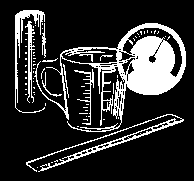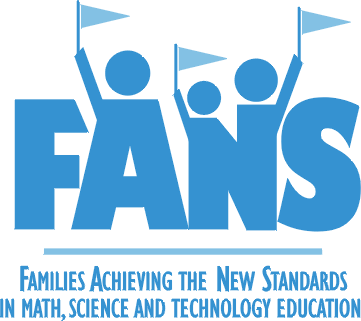NEW JERSEY'S STANDARDS: WHAT WILL MY CHILD BE LEARNING IN MATHEMATICS?In May 1996, the New Jersey State Board of Education adopted the Core Curriculum Content Standards. The standards stress the importance of having children solve problems, of being able to reason about what they are doing, and being able to explain their reasoning. The standards also emphasize making connections between mathematics and other subjects, and between mathematics and daily life. The standards include ten areas of mathematics for all students to study every year, from kindergarten through high school. From the very beginning, children should be exposed to a variety of mathematical ideas, not just arithmetic. As they get older, their understanding of these mathematics topics will grow and deepen. |
Number Sense
It is important for children to have a common- sense understanding about numbers and how to use them -- for counting, measuring, and putting things in order. Young students use only whole numbers, but as they get older they learn about fractions, decimals, and percents and how these numbers are related to each other. They use numbers for large things, like the distance to the sun, and for small things, like the width of a hair.
Geometry and Spatial Sense

Young children classify objects by their shapes, discuss characteristics of shapes, and put shapes together to make new shapes. Later, they learn about coordinate geometry and use an (x,y) grid for plotting points. They investigate questions like, How much longer is it around a circle than across it? By high school, they are using numbers, algebra and reasoning skills to apply geometry to real-world problems.
Numerical Operations (Arithmetic)
Children have to know how to add, subtract, multiply and divide whole numbers, fractions, and decimals. They need to memorize facts (like the "times table"). They need to perform paper and pencil computations (like multiplying two-digit numbers). But in standards-based classrooms there is more emphasis on understanding why these processes work and how they are used in problem-solving situations. Children also do a lot of mental math for estimating answers. For example, 18x41 is about 20x40, so the answer will be about 800.
Estimation
People often use estimation in their daily lives. For example, About how much will it cost to buy the five things on my shopping list? The ability to do mental math and to estimate has become even more important with the growing use of calculators. They are great for finding answers, but children need to be aware that they can get impossible answers if they hit the wrong keys! Whenever they use a calculator, they should first estimate the answer so that they know if the calculator's answer makes sense.
Measurement

Children begin by learning about simple measures for length, weight, and temperature. Later they learn about more complex measurements for things like pressure, speed, and brightness. All children need to be familiar with common measurement units like grams, inches, liters, and miles per hour. They also need practical experiences using tools for measuring -- like rulers, scales, and protractors.
Patterns and Functions
Young children find patterns in numbers, shapes, and the world around them, and they build their own patterns. Older children look for patterns as a way to solve problems, and theywrite algebraic expressions to describe patterns. For example, 2,4,8,16... and 3,9,27,81... both follow the pattern x, x2, x3, x4....
Algebra
In early grades, children are using algebraic thinking when they solve problems like 3 + _ = 5. As children get older, they use variables and equations to express mathematical ideas. Graphing calculators have made it possible for students to see relationships between equations like y = 3x + 4 and the graph that the equation represents. Graphing calculators provide a powerful tie between algebra and geometry.
Probability and Statistics
Probability and statistics are a part of everyday talk about weather (the probability of rain is ...), election results (the poll says ...), marketing surveys (3 out of 4 people prefer ...) and sports statistics (a 3 to 2 favorite). Beginning in kindergarten, children learn to collect, organize and analyze data about simple things like what kinds of pets they have. As they get older, they learn how to judge the claims being made in the media by advertisers, politicians, reporters, and researchers.
Discrete Mathematics
Discrete mathematics is a new branch of mathematics dealing with practical problems like how to find the best route from one place to another, how to schedule events or classes, or how many ways available money can be spent. It often involves examining many different ways to do a task and then selecting a best way.
Calculus
The fundamental ideas of calculus are important for all children to understand, even if they never take a formal course in the subject. Calculus is about how things change over time. For example, how the speed of a car changes during a race, how interest accumulates in a bank account, or how the area of a rectangle changes as you vary its length and width. In beginning grades, students might investigate how quickly a pile of blocks grows if the number is doubled each day.
